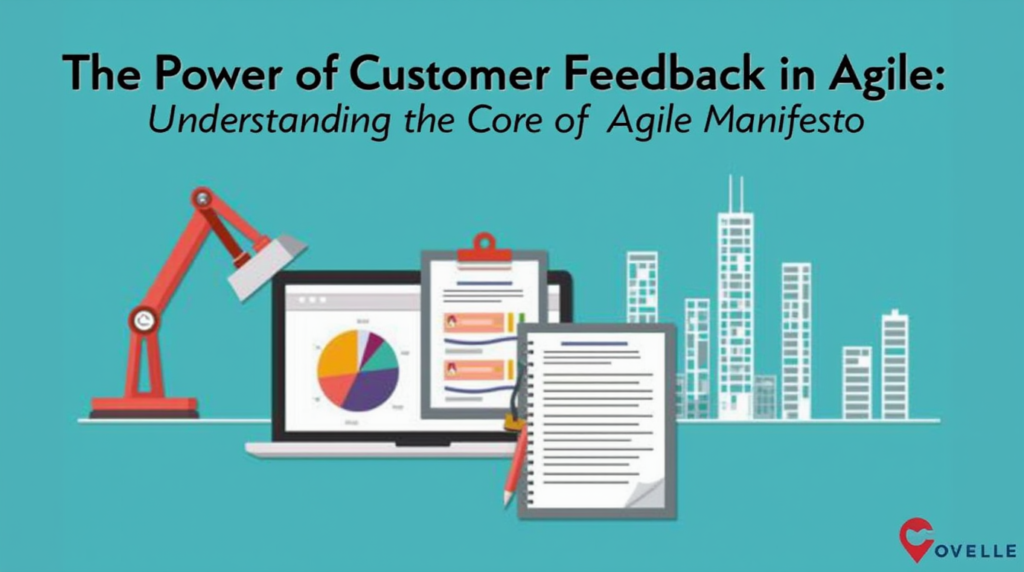Collecting Customer Feedback Agile: Understanding the Agile Manifesto
The Agile Manifesto has revolutionized software development by emphasizing flexibility, collaboration, and customer satisfaction. In today’s fast-paced digital landscape, collecting customer feedback agile is crucial for creating products that truly meet user needs. This article delves into the principles of the Agile Manifesto, exploring how they facilitate collecting customer feedback agile and drive continuous improvement in software development.
The Origins of the Agile Manifesto
Born in 2001, the Agile Manifesto emerged as a response to the limitations of traditional software development methodologies. A group of 17 software developers met in Snowbird, Utah, to discuss lightweight development methods. Their discussions resulted in a concise document that transformed the industry: the Agile Manifesto.
Key Drivers for Agile Development
The Agile Manifesto was driven by the need for more adaptive and customer-focused development processes. Traditional methods, like the Waterfall model, often led to long development cycles with minimal customer input. This lack of flexibility frequently resulted in products that failed to meet user expectations.
The Core Values of Agile
The Agile Manifesto is built upon four core values that prioritize individuals, collaboration, and responsiveness over rigid processes. These values are:
1. Individuals and Interactions Over Processes and Tools: Emphasizing the importance of human collaboration.
2. Working Software Over Comprehensive Documentation: Focusing on delivering functional products.
3. Customer Collaboration Over Contract Negotiation: Encouraging active involvement from customers.
4. Responding to Change Over Following a Plan: Allowing teams to adapt to changing requirements.
The Twelve Principles of Agile
In addition to its core values, the Agile Manifesto outlines twelve guiding principles. These principles advocate for customer satisfaction, adaptability, and sustainable development. They serve as a framework for teams to implement agile practices effectively.
Implementing Agile Practices for Customer Feedback
One of the standout aspects of the Agile Manifesto is its focus on customer collaboration. By collecting customer feedback agile, teams can ensure that their products align with user needs and expectations.
Continuous Customer Engagement
Agile practices emphasize the importance of maintaining a continuous dialogue with customers. By regularly collecting feedback, teams can make informed decisions and prioritize features that deliver the most value.
Methods for Collecting Feedback
1. User Testing: Conducting regular user testing sessions helps identify pain points and areas for improvement.
2. Surveys and Questionnaires: Gathering quantitative data through structured surveys provides insights into user preferences.
3. Focus Groups: Engaging small groups of users in discussions can reveal deeper insights into their experiences.
Iterative Development and Feedback Loops
Agile methodologies, such as Scrum and Kanban, are designed to accommodate frequent feedback loops. By breaking development into iterative cycles, teams can respond swiftly to customer input and make necessary adjustments.
Benefits of Feedback Loops
– Enhanced Product Quality: Continuous feedback helps identify and rectify issues early in the development process.
– Increased Customer Satisfaction: Incorporating user input ensures that the final product meets customer expectations.
– Improved Team Morale: Clear feedback provides teams with a sense of direction and purpose.
Prioritizing Customer Needs
The Agile Manifesto encourages teams to prioritize customer needs through active collaboration. By focusing on delivering value, teams can create products that not only meet but exceed user expectations.
Challenges and Solutions in Agile Feedback Collection
While collecting customer feedback agile offers numerous benefits, it also presents certain challenges. Understanding these obstacles and implementing effective solutions is key to successful agile adoption.
Common Challenges
1. Overwhelming Feedback: Teams may struggle to manage and prioritize an abundance of feedback.
2. Customer Availability: Ensuring consistent customer involvement can be difficult.
3. Balancing Feedback with Vision: Aligning customer feedback with the product vision requires careful consideration.
Effective Solutions
Streamlining Feedback Processes
– Use of Digital Tools: Leverage project management and feedback collection tools to organize and prioritize input.
– Regular Review Meetings: Conducting regular meetings helps teams assess feedback and align it with project goals.
Ensuring Customer Engagement
– Building Strong Relationships: Cultivate relationships with key customers to ensure ongoing involvement.
– Flexible Scheduling: Offer flexible participation options to accommodate customer availability.
Aligning Feedback with Vision
– Clear Communication: Articulate the product vision clearly to ensure that feedback aligns with strategic goals.
– Prioritization Frameworks: Use frameworks like MoSCoW (Must have, Should have, Could have, Won’t have) to evaluate feedback.
Real-World Applications of the Agile Manifesto
The principles of the Agile Manifesto have been successfully applied across various industries, demonstrating their versatility and effectiveness.
Case Study: A Software Development Company
A leading software development company adopted agile practices to enhance its product development process. By collecting customer feedback agile, the company reduced development cycles and improved customer satisfaction significantly.
Key Outcomes
– Faster Time-to-Market: Iterative development enabled quicker releases and updates.
– Higher User Satisfaction: Regular feedback incorporation resulted in products that better met user needs.
– Increased Team Efficiency: Agile practices fostered a collaborative and motivated team environment.
Expanding Agile Beyond Software
While initially developed for software, the Agile Manifesto’s principles have been embraced by various sectors, including marketing, education, and manufacturing. These industries have benefited from agile’s emphasis on flexibility and customer-centricity.
Conclusion
The Agile Manifesto has left an indelible mark on the world of product development. By prioritizing customer collaboration and adaptability, it empowers teams to create products that truly resonate with users. Collecting customer feedback agile is a cornerstone of this approach, ensuring that products evolve in line with ever-changing user needs. As industries continue to embrace agile methodologies, the principles of the Agile Manifesto will remain a guiding light for innovation and success.
Whether you are a software developer or part of a different industry, understanding and applying the Agile Manifesto’s principles can drive significant improvements in product development and customer satisfaction. Embrace the agile mindset, and unlock the potential to transform your projects and exceed customer expectations.













